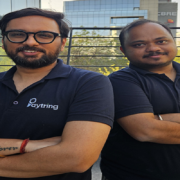Companies are at an increased risk of becoming targets of cyber incidents due to the use of shadow IT by their employees amid the growing trend towards a distributed workforce, a recent study has found. According to research by Kaspersky, in India, 89% of companies suffered cyber incidents in the last two years, and 20% of these were caused by the use of shadow IT.
A recent Kaspersky study showed that, in the last two years, 11% of companies worldwide have suffered cyber incidents due to the use of shadow IT by employees. The consequences of the use of shadow IT can be diverse in their severity, but they are never insignificant, whether it’s the leak of a piece of confidential data or tangible damage to a business.
So, what is shadow IT?
Shadow IT is the part of the company’s IT infrastructure that is outside the purview of the IT and Information Security departments, i.e. applications, devices, public cloud services, etc. but that is not being used following information security policies. Deployment and operating shadow IT can lead to serious negative outcomes for businesses. Many instances were found in the Kaspersky study, which revealed that the IT industry – had been the hardest hit, suffering 16% of cyber incidents due to the unauthorized use of shadow IT in 2022 and 2023. Other sectors hit by the problem were critical infrastructure and transport & logistics organizations, which saw 13%.
Recent case of Okta proves the dangers of using shadow IT. This year, an employee using a personal Google account on a company-owned device unintentionally allowed threat actors to gain unauthorized access to Okta’s customer support system. There they were able to hijack files containing session tokens that could then be used to conduct attacks. This cyber incident lasted for 20 days and impacted 134 company customers according to Okta’s report.
Outlining ‘blurry shadows’
So, when you are looking for shadow IT, what to look for? These can be either unauthorized applications installed on employee computers, or unsolicited flash drives, mobile phones, laptops, etc.
But some options are less conspicuous. One example of this is abandoned hardware left over after the modernisation or reorganisation of the IT infrastructure. It can be used ‘in the shadows’ by other employees, acquiring vulnerabilities that will sooner or later find their way into the company’s infrastructure.
Regarding IT specialists and programmers, as it often occurs, they can create a tailored programs themselves to optimize work within a team/department, or to solve internal problems, making work faster and more efficient. However, they don’t always ask to the Information Security department for authorization to use these programs, and this could have disastrous consequences.
“Employees who use applications, devices or cloud services that are not approved by the IT-department, believe that if those IT-products come from trusted providers, they should be protected and safe. However, in the ‘terms and conditions’ third-party providers use the so-called ‘shared responsibility model’. It states that, by choosing ‘I agree’ users confirm that they will perform regular updates of this software and that they take responsibility for incidents related to the use of this software (including corporate data leakages). But at the end of the day business needs tools to control the shadow IT when it’s used by employees. The Information Security department will of course still need to conduct regular scans of their company’s internal network to avoid the unauthorized use of uncontrolled and unsafe hardware, services and software applications.” comments Alexey Vovk, Head of Information Security at Kaspersky.
In general, the situation with the widespread usage of shadow IT is complicated by the fact that many organizations do not have any documented sanctions where their employees will suffer as a consequence of going against IT policies in this matter. Moreover, it is assumed that shadow IT could become one of the top threats to corporate cybersecurity by 2025. The good news is that the motivation for employees to use shadow IT is not always malicious, even more often, it’s the opposite. Employees in many cases use this as an option to expand the functionality of the products they use at work because they believe that the set of allowed software is insufficient, or they simply prefer the familiar program from their personal computer.








